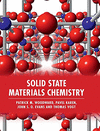issue contents
April 2024 issue

Cover illustration: Rusanov et al. [Acta Cryst. (2024), B80, 135–145] investigate the behavior of the [Rb(18-crown-6)][SbCl6] complex under high pressure. The highly symmetric structure of this complex makes it a valuable model for studying pressure-induced interatomic interactions and structural changes, offering insights into crystal compression. The crystal exhibits anisotropic compression, which primarily occurs along the crystallographic c-axis. Under pressure, disordered Rb atoms are driven closer to the center of the crown ether cavity, ultimately requiring 2.5 GPa for complete encapsulation.
research papers
 access
access





 access
access





 access
access

 access
accessbook reviews


 journal menu
journal menu




































